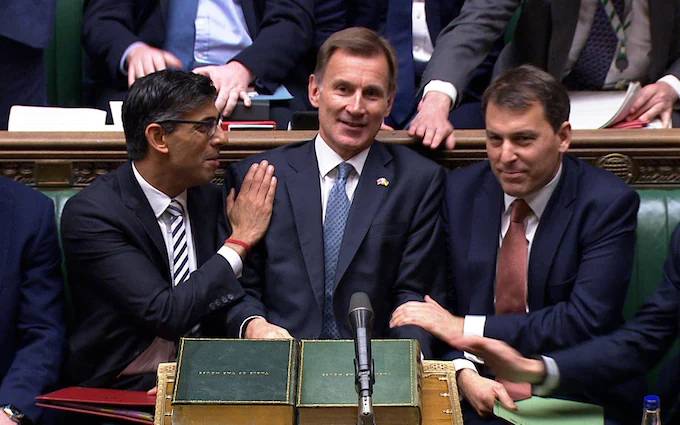Introduction: In a fiscal maneuver that combines boldness with caution, Hunt has announced a cut in national insurance rates while simultaneously steering overall taxes to postwar highs. This dynamic strategy prompts an exploration of the motivations, sector-specific implications, and the broader economic impact of this balancing act. National Insurance Rate Cut: 1. Economic Stimulus Intent:
Introduction:
In a fiscal maneuver that combines boldness with caution, Hunt has announced a cut in national insurance rates while simultaneously steering overall taxes to postwar highs. This dynamic strategy prompts an exploration of the motivations, sector-specific implications, and the broader economic impact of this balancing act.
National Insurance Rate Cut:
1. Economic Stimulus Intent:
Examine the rationale behind Hunt’s decision to cut national insurance rates. Analyze how this move is positioned as a tool for economic stimulus, potentially boosting disposable income for workers and supporting consumer spending.
2. Impact on Businesses:
Consider the implications for businesses with the reduction in national insurance rates. Assess whether this cut is expected to alleviate some financial burden on employers, fostering a more business-friendly environment.
Taxes Heading to Postwar Highs:
1. Fiscal Responsibility:
Understand the broader context of taxes reaching postwar highs. Explore Hunt’s motivations for maintaining or increasing taxes, assessing the need for fiscal responsibility and revenue generation amid economic challenges.
2. Sector-Specific Tax Implications:
Examine how different sectors will be affected by the overall tax trajectory. Analyze whether certain industries or income brackets bear a larger share of the tax burden and the potential consequences for economic inequality.
Motivations and Political Landscape:
1. Voter Perception:
Evaluate how Hunt’s tax strategy might be perceived by the electorate. Consider the political implications of balancing a tax cut with an overall increase, and how this aligns with public sentiment.
2. Long-Term Economic Vision:
Assess whether Hunt’s approach reflects a long-term economic vision. Explore how this strategy positions the government to address immediate economic challenges while laying the groundwork for sustained growth.
Sector-Specific Impacts:
1. Consumer Spending Patterns:
Analyze the potential impact on consumer spending patterns resulting from the national insurance cut. Consider whether increased disposable income will lead to changes in consumption habits.
2. Business Investment and Innovation:
Examine how businesses may respond to the tax landscape. Assess whether a reduction in national insurance rates encourages investment and innovation, contributing to economic growth.
Public Services and Welfare:
1. Funding Public Services:
Explore how the tax strategy aligns with funding public services. Assess whether the government has outlined plans to ensure that essential services receive adequate funding despite the overall tax trajectory.
2. Social Welfare Programs:
Consider the impact on social welfare programs. Analyze whether the tax structure supports or challenges the government’s ability to sustain and expand welfare initiatives.

Image by: https://www. tele graph. co.uk
International Economic Relations:
1. Global Competitiveness:
Assess how the tax strategy positions the country in terms of global competitiveness. Consider whether the approach aligns with international economic trends and practices.
2. Trade and Investment Impact:
Explore potential impacts on trade and foreign investment. Analyze how the tax environment may influence international perceptions of the country as a destination for business and investment.
Economic Forecast and Adaptation:
1. Economic Growth Projections:
Consider the economic growth projections in light of the tax strategy. Evaluate whether the government has provided forecasts for GDP growth and employment, considering the anticipated impact of these tax changes.
2. Adaptive Measures:
Explore whether the tax strategy includes adaptive measures. Assess whether the government has outlined contingencies or adjustments based on the evolving economic landscape.
Conclusion:
Hunt’s dual approach of cutting national insurance while guiding overall taxes to postwar highs reflects a nuanced economic strategy. As the nation navigates this fiscal landscape, the repercussions on businesses, consumers, public services, and the broader economy will unfold. This balancing act aims to stimulate growth while maintaining fiscal responsibility, presenting a complex economic scenario with multifaceted implications.

















Leave a Comment
Your email address will not be published. Required fields are marked with *